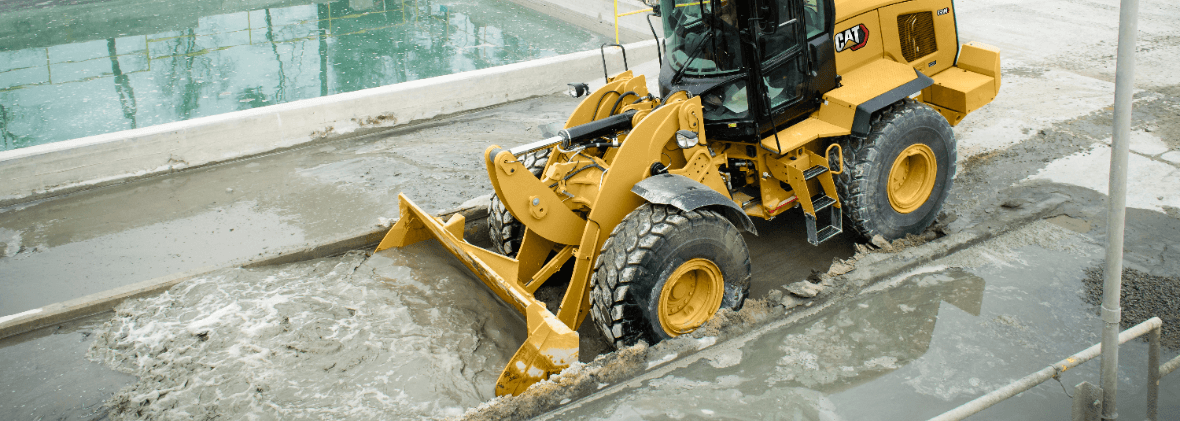
Pouring Concrete in the Winter: Why Renting the Right Equipment Matters
Pouring concrete in cold weather presents unique challenges. If temperatures drop below 40°F, concrete sets slowly and is more prone to cracking or failure. But winter doesn’t have to halt your projects. With the right preparation and access to The Cat® Rental Store solutions like heaters, ground thaw units and enclosures, you can keep work moving year-round.
The Right Temperature for Winter Concrete
Concrete cures best when internal temperatures are between 50°F and 60°F. Below 40°F, the hydration process slows significantly, leaving concrete vulnerable to strength loss and cracking. At 25°F or colder, water inside the mix can freeze, causing permanent structural damage.
Monitoring both ambient and internal concrete temperatures is critical for quality results. Contractors often use insulated blankets and portable heaters to maintain consistent curing conditions.
Preparing the Site
Before you pour, take steps to make sure your site is ready:
Warm your materials: Keep aggregates and water above freezing by storing them in heated sheds or enclosures.
Thaw the ground: Frozen soil leads to poor bonding. Use ground thaw heater rentals to prepare the subgrade.
Check formwork: Make sure forms are free of ice or snow that could affect the pour.
Stage equipment: Have generators and heaters set up before concrete trucks arrive.
Proper preparation ensures better results and reduces delays during the pour.
Adjusting the Mix
Concrete mixtures often require adjustments in cold weather:
Use hot water: Mix with water heated to 140°F or less to speed curing.
Increase cement content: More cement accelerates hydration.
Use accelerators: Additives like calcium chloride reduce set times.
Limit fly ash or slag: These extend curing time and should be minimized in winter mixes.
These adjustments help concrete achieve the required strength even in colder environments.
Pouring and Curing in Cold Weather
Even with the right mix, how you cure concrete makes the difference:
Cover with blankets: Insulated curing blankets retain heat for consistent curing.
Erect enclosures: Temporary shelters keep out wind, snow and ice.
Apply heaters: Indirect-fired heaters provide controlled warmth without adding excess moisture.
Monitor conditions: Use thermometers or data loggers to ensure concrete stays within the safe curing range.
Adding light tower rentals can improve site safety during shorter daylight hours in winter.
Safety Considerations
Cold weather brings added risks to jobsites. Prevent slips, trips and falls by keeping work areas clear of ice and snow. Use adequate lighting to avoid accidents and ensure heaters are operated according to manufacturer guidelines to prevent fire hazards.
Renting the right support equipment, from heaters to lighting, ensures projects stay safe and productive even in harsh conditions.
Rent Winter Concrete Equipment Through The Cat® Rental Store
By renting heaters, thaw units, generators and enclosures from The Cat Rental Store, you can maintain safety and quality even in freezing temperatures.
Benefits include:
Flexible rental terms: daily, weekly or monthly
1,300+ dealer locations worldwide for fast access
Support and training to ensure safe, efficient use
Ability to request a quick quote online for streamlined rentals
